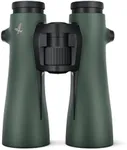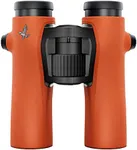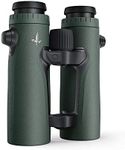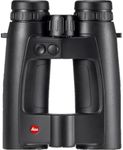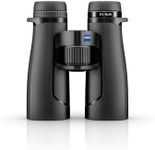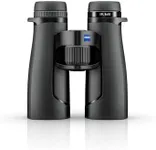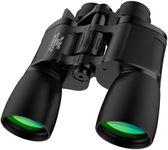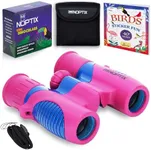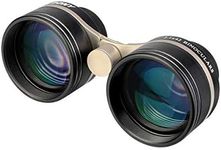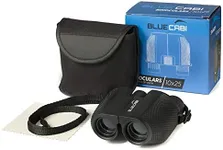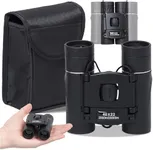Buying Guide for the Best Bird Binoculars
Choosing the right bird binoculars can greatly enhance your bird-watching experience. The right pair will allow you to see birds clearly and comfortably, even from a distance. When selecting binoculars, it's important to consider several key specifications to ensure you get the best fit for your needs. Here are the main specs to look at and how to navigate them.MagnificationMagnification indicates how many times closer an object will appear compared to the naked eye. For bird watching, a magnification of 8x or 10x is generally recommended. 8x magnification provides a wider field of view, which is useful for spotting birds in dense foliage, while 10x magnification offers more detail but can be harder to keep steady. Choose 8x if you are a beginner or often watch birds in wooded areas, and 10x if you prefer more open spaces and want to see finer details.
Objective Lens DiameterThe objective lens diameter, measured in millimeters, determines how much light enters the binoculars. Larger diameters (e.g., 42mm) allow more light, providing brighter images, especially in low-light conditions like dawn or dusk. However, larger lenses also make the binoculars heavier. For bird watching, a common choice is 42mm, balancing brightness and portability. If you prioritize lightweight binoculars, consider a smaller diameter like 32mm, but be aware that they may not perform as well in low light.
Field of ViewField of view (FOV) is the width of the area visible through the binoculars at a specific distance, usually measured in feet at 1,000 yards. A wider FOV makes it easier to locate and follow birds, especially those that move quickly. Binoculars with a FOV of 350 feet or more are ideal for bird watching. If you often watch birds in open areas, a wider FOV is beneficial. For more stationary bird watching or focusing on specific details, a narrower FOV might suffice.
Weight and SizeThe weight and size of binoculars affect how comfortable they are to use for extended periods. Heavier binoculars can be tiring to hold, while lighter ones are easier to carry and handle. Compact binoculars are more portable but may have smaller objective lenses, affecting image brightness. Consider how long you typically spend bird watching and whether you need to carry the binoculars over long distances. Choose a weight and size that you can comfortably manage for your typical bird-watching sessions.
Eye ReliefEye relief is the distance from the eyepiece to your eye while still seeing the full field of view. This is especially important for eyeglass wearers. Longer eye relief (15mm or more) allows you to use binoculars comfortably with glasses. If you wear glasses, look for binoculars with adjustable eyecups and longer eye relief to ensure a full and comfortable view. If you don't wear glasses, shorter eye relief may be sufficient.
Waterproofing and DurabilityWaterproofing and durability are important for outdoor use, protecting your binoculars from rain, humidity, and accidental drops. Look for binoculars labeled as waterproof and fog-proof, often indicated by terms like 'nitrogen-purged' or 'O-ring sealed.' If you frequently bird watch in wet or humid conditions, or if you want a pair that can withstand rough handling, prioritize these features to ensure longevity and reliability.
